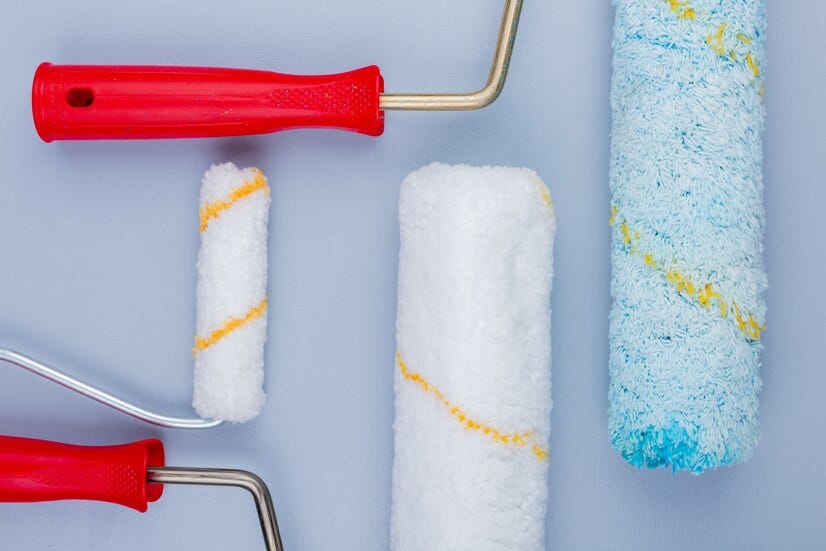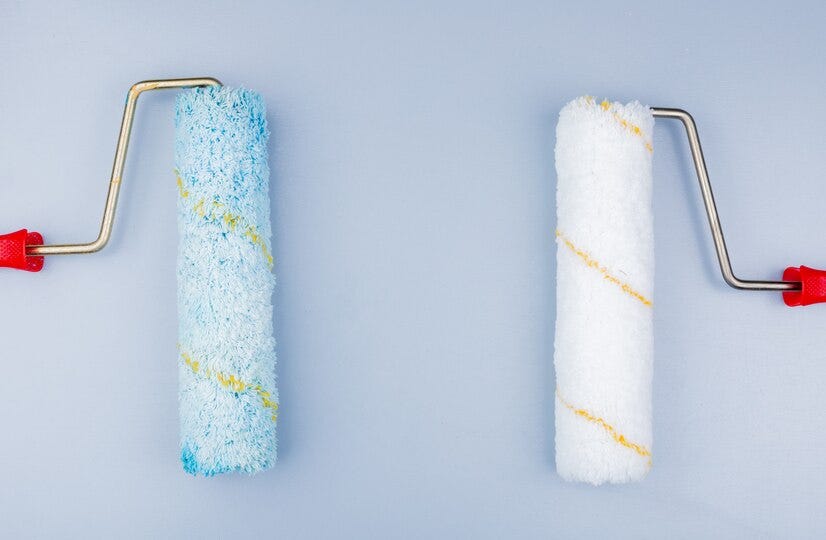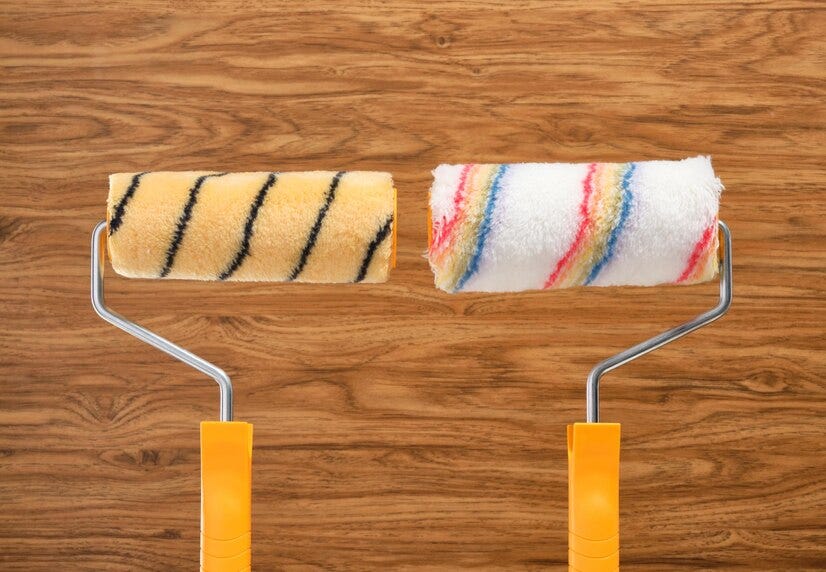Essential Tips for Cleaning and Maintaining Your Epoxy Glide Roller Cover for Extended Durability
A perfect, flawless finish with epoxy resin projects depends much on the quality of the roller cover you choose. Among the several choices, the epoxy glide roller cover stands out for its exceptional performance and capacity to offer consistent coverage free of roller markings. Good cleaning and maintenance are absolutely crucial to guarantee you maximize your epoxy glide roller cover. The best ways to keep your epoxy glide roller cover clean and maintain its lifetime and greatest performance will be discussed on this page.

Understanding the Importance of Proper Cleaning and Maintenance
Working with epoxy resin can be tough since it can be sticky and tough to remove from surfaces and instruments. Should you neglect to thoroughly clean your roller cover following use, the solidified resin may represent a huge obstacle the next time you are working on a project. Your epoxy glide roller cover will last longer, remain able to produce a smooth finish and avoid needless wear and tear if you take the time to clean and maintain it. This article will lead you through the process of maintaining your roller in tip-top form, so ensuring that it will continue to be useful for all your epoxy coating requirements.
Why Choose an Epoxy Glide Roller Cover?
Understanding why the epoxy glide roller cover is such a common choice for resin application can help one better appreciate cleaning and maintenance advice. Unlike conventional paint rollers, epoxy glide rollers are made especially to manage the particular difficulties presented by epoxy resin. The thick, non-abrasive fabric of these roller covers helps apply epoxy uniformly, therefore reducing bubbles and guaranteeing a flawless finish. The best roller for epoxy is one that allows professional-quality results every time since you can glide easily over surfaces.
Still, you must preserve your epoxy glide roller cover carefully if you want to keep its outstanding function.
Step 1: Clean the Roller Immediately After Use
Cleaning your epoxy glide roller cover right away after use is among the most crucial things you can do to maintain its quality. Epoxy glue cures quickly, thus waiting too long could result in a hardened mess on your roller that complicates cleaning.
Beginning with as much epoxy as you can, gently scrape off extra resin from the roller. One can accomplish this with an old piece of cardboard or a spatula. Rine the roller with warm water once most of the resin is gone. If you are using a solvent-based epoxy, think about using a cleaner made especially for epoxy resin since it will break down the resin more precisely than water by itself.
Step 2: Use the Right Cleaning Agents
Water by itself might not be enough to clean your epoxy glide roller cover, particularly when working with thicker or more persistent epoxy formulations. Hardened resin from instruments, particularly roller covers, is often removed using solvents including acetone or isopropyl alcohol. But since the fumes from these drugs can be strong, be sure you use them in a well-ventilated environment.
Spray a tiny bit of solvent onto a fresh cloth or sponge while cleaning your roller cover. Wipe the roller gently enough that the solvent dissolves the epoxy glue. Rotating the roller will help you to completely clean it and look for any last residue. Proceed as needed until the roller is clean. Always refrain from using strong abrasives or scrubbing too forcefully since this can ruin the roller’s fabric.
Step 3: Soak the Roller for Thorough Cleaning
Should you be cleaning more challenging surfaces, you might have to dip your epoxy glide roller cover in a solvent. This especially helps if the resin has had time to cure and set on the roller. Soaking eases the epoxy’s release, therefore facilitating removal.
Put the roller in a container filled with enough solvent such that it is completely submerged to soak it. Though no more than an hour, let the roller soak for at least thirty minutes. Use a gentle brush to gently clean the roller and eliminate any last epoxy residue upon soaking.
Step 4: Rinse the Roller and Dry It Properly
Rinse your epoxy glide roller cover with warm water to wash any last traces of solvent. This is a crucial stage since in the next projects you want no solvent residue to compromise the roller’s or epoxy’s performance.
Rinsing; then, squeeze off any extra water and let the roller air dry totally before refrigeration. The roller should be placed in a well-ventilated area so it may naturally dry. Steer clear of direct sunshine and hairdryers as these could deform or lose the shape of the roller.

Step 5: Inspect the Roller for Damage
Spend some time looking over your roller for any damage after it is dry and clean. Look for places where the fabric might have frayed or worn down. It could be time to replace the roller cover if it looks to be in bad shape. A worn-out roller may leave undesired marks or texture in your epoxy application, therefore compromising its quality.
Check the roller also for any epoxy residue left over that might have been overlooked while cleaning. Should you find any, just keep cleaning until the roller is perfect.
Step 6: Store the Roller Properly
One sometimes neglected element of roller maintenance is correct storage. Improper storage of your epoxy glide roller cover could cause distortions in the roller fabric, therefore influencing the roller’s performance in the next use.
Before storing the roller, make sure it is totally dry following cleaning. Put it somewhere dry and safe so it won’t be under great pressure or excessive temperature. To keep the roller straight and with the nap side facing upward, ideally, store it upright. This will make sure your roller stays in good shape for the next usage and help avoid the fibres from compassing.
Step 7: Maintain Your Roller Between Uses
Frequent maintenance will help your epoxy glide roller cover last for longer. To prevent resin accumulation, be careful to wash off any residual epoxy right away following every use. Wiping the roller down with a cloth or paper towel will help to prevent epoxy from solidifying on the surface even if you do not totally clean it after every use.
If you are working on bigger epoxy projects or applying several coats, also take more frequent consideration on cleaning your roller cover. In applying an even, smooth layer of epoxy, a well-maintained roller not only is more efficient but also more effective.

Conclusion
Maintaining long-lasting functionality and obtaining the finest potential results from your epoxy projects depends on keeping your epoxy glide roller cover intact. Following the advice in this article will help you to maintain your roller in perfect shape, ready for any upcoming epoxy application. Key components in maintaining the performance of your roller include remembering to clean right after use, using appropriate cleaning chemicals and correct storage.
One of the greatest epoxy glide roller covers is here, and with regular maintenance, it will keep working for many projects. Regular care not only extends the lifetime of the roller but also ensures that every coat of epoxy is applied uniformly and evenly. When used correctly, the best roller for epoxy delivers flawless results, guaranteeing a perfect finish every time.



Comments
Post a Comment